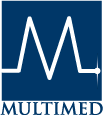Implementation and Assessment of a Pharmacy Educational Program Concerning Laboratory Monitoring for Medications
DOI:
https://doi.org/10.4212/cjhp.v70i1.1625Keywords:
pharmacist, education, laboratory monitoring, clinical interventions, pharmacien, formation, surveillance par des examens de laboratoire, interventions cliniquesAbstract
ABSTRACT
Background: The pharmacist’s role in monitoring medication therapy, including the ability to order laboratory tests as a delegated medical function, has increased dramatically over the past 20 years.
Objectives: To implement and assess the impact of an intervention designed to educate pharmacists about appropriate medication-related laboratory monitoring and clinical interpretation of results.
Methods: This pilot project had a pretest–posttest study design. The intervention was an educational program comprising 8 self-directed learning modules, each with a corresponding seminar. Evaluation of the program included scoring of the appropriateness and significance of clinical interventions related to laboratory monitoring, pre- and postprogram test scores, and participants’ subjective assessments of their abilities to order and assess the results of medication-related laboratory investigations. Descriptive statistics, the Wilcoxon signed rank test, the Student t-test, and the paired Student t-test were used where appropriate. Associations were assessed with the Pearson or Spearman rho correlation coefficient. All statistical tests were 2-tailed, and the p value for significance was established a priori at 0.05.
Results: There was no statistically significant difference with regard to the appropriateness (p = 0.70) or significance (p = 0.94) of clinical interventions undertaken before and after the educational program. Among the 21 pharmacists who completed the program, the average test score (± standard deviation) was 27.2 ± 8.1 before the program, increasing to 39.2 ± 8.7 after the program (p < 0.001). There was a statistically significant improvement in the perceived level of knowledge for each individual module (p < 0.05 for all).
Conclusions: The establishment of an educational program led to improvements in both subjective and objective measures of knowledge and perceived abilities to order and assess the results of medication-related laboratory tests.
RÉSUMÉ
Contexte : Le rôle du pharmacien dans la surveillance de la pharmacothérapie, notamment la capacité de prescrire des examens de laboratoire en tant qu’acte médical délégué, a grandement gagné en importance au cours des vingt dernières années.
Objectifs : Mettre en place une intervention conçue pour enseigner aux pharmaciens comment surveiller adéquatement la pharmacothérapie au moyen d’examens de laboratoire pertinents et comment réaliser l’interprétation clinique des résultats, puis évaluer les effets de cet enseignement.
Méthodes : Le présent projet pilote emploie un plan d’étude prétest post-test. L’intervention prenait la forme d’un programme d’enseignement comptant huit modules d’apprentissage autodirigé, chacun assorti d’un séminaire correspondant. L’évaluation du programme comprenait : l’attribution d’un score pour la pertinence et la portée des interventions cliniques liées à la surveillance par des examens de laboratoire, la comparaison des notes obtenues au test administré avant et après le programme d’enseignement et des évaluations subjectives par les participants de leurs capacités à prescrire des examens de laboratoire adaptés à la pharmacothérapie et à en évaluer les résultats. Le cas échéant, des éléments de statistique descriptive, le test de Wilcoxon, le test de Student et le test t pour échantillons appariés ont été employés. Les associations ont été évaluées à l’aide du coefficient de corrélation de Spearman ou de Pearson. Tous les tests statistiques étaient bilatéraux et le seuil de signification a été établi a priori à 0,05.
Résultats : On n’a observé aucune différence statistiquement significative en ce qui touche à la pertinence (p = 0,70) ou à la portée (p = 0,94) des interventions cliniques effectuées avant et après le programme d’enseignement. Parmi les 21 pharmaciens ayant complété le programme, la note moyenne (± l’écart-type) obtenue au test était de 27,2 ± 8,1 avant le programme d’enseignement pour ensuite atteindre 39,2 ± 8,7 après le programme (p < 0,001). On a relevé une amélioration statistiquement significative quant au niveau subjectif de connaissance pour chaque module (p < 0,05 pour chacun).
Conclusions : La mise en place d’un programme d’enseignement a mené à des améliorations, tant sur le plan des mesures subjectives et objectives des connaissances que des capacités subjectives à prescrire des examens de laboratoire adaptés à la pharmacothérapie et à en évaluer les résultats.
Downloads
Published
Issue
Section
License
Copyright © Canadian Society of Healthcare-Systems Pharmacy.
After publication of a manuscript in the CJHP, the authors of the manuscript must obtain written permission from the CSHP (publications@cshp.ca) before reproducing any text, figures, tables, or illustrations from the work in future works of their own. If a submitted manuscript is declined for publication in the CJHP, all said rights shall revert to the authors. Please note that any forms (e.g., preprinted orders and patient intake forms) used by a specific hospital or other health care facility and included as illustrative material with a manuscript are exempt from this copyright transfer. The CJHP will require a letter from the hospital or health care facility granting permission to publish the document(s).










